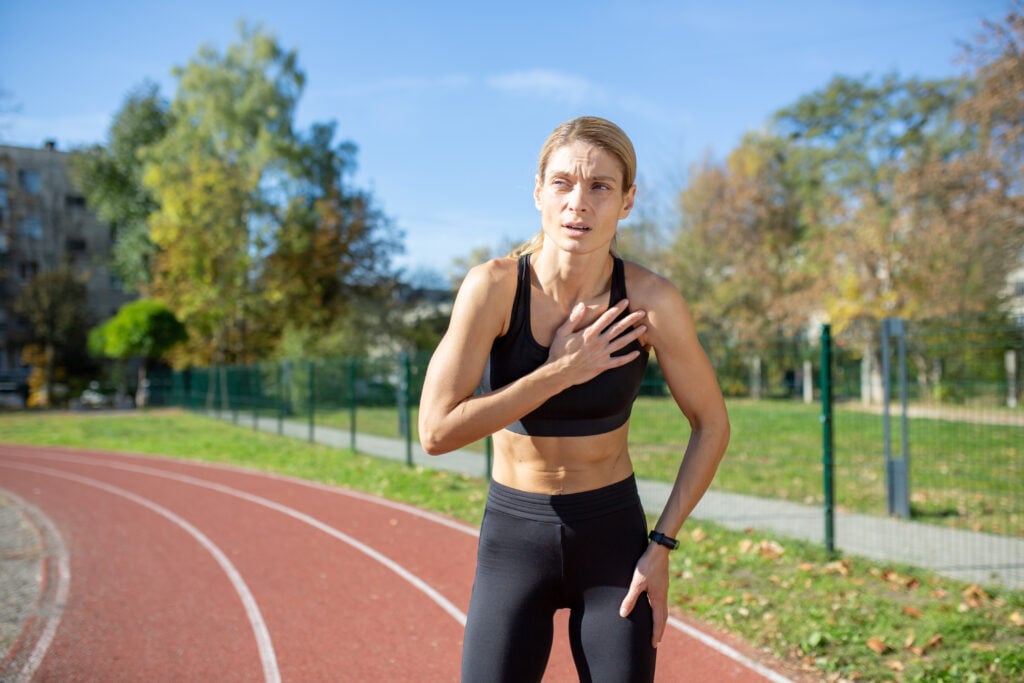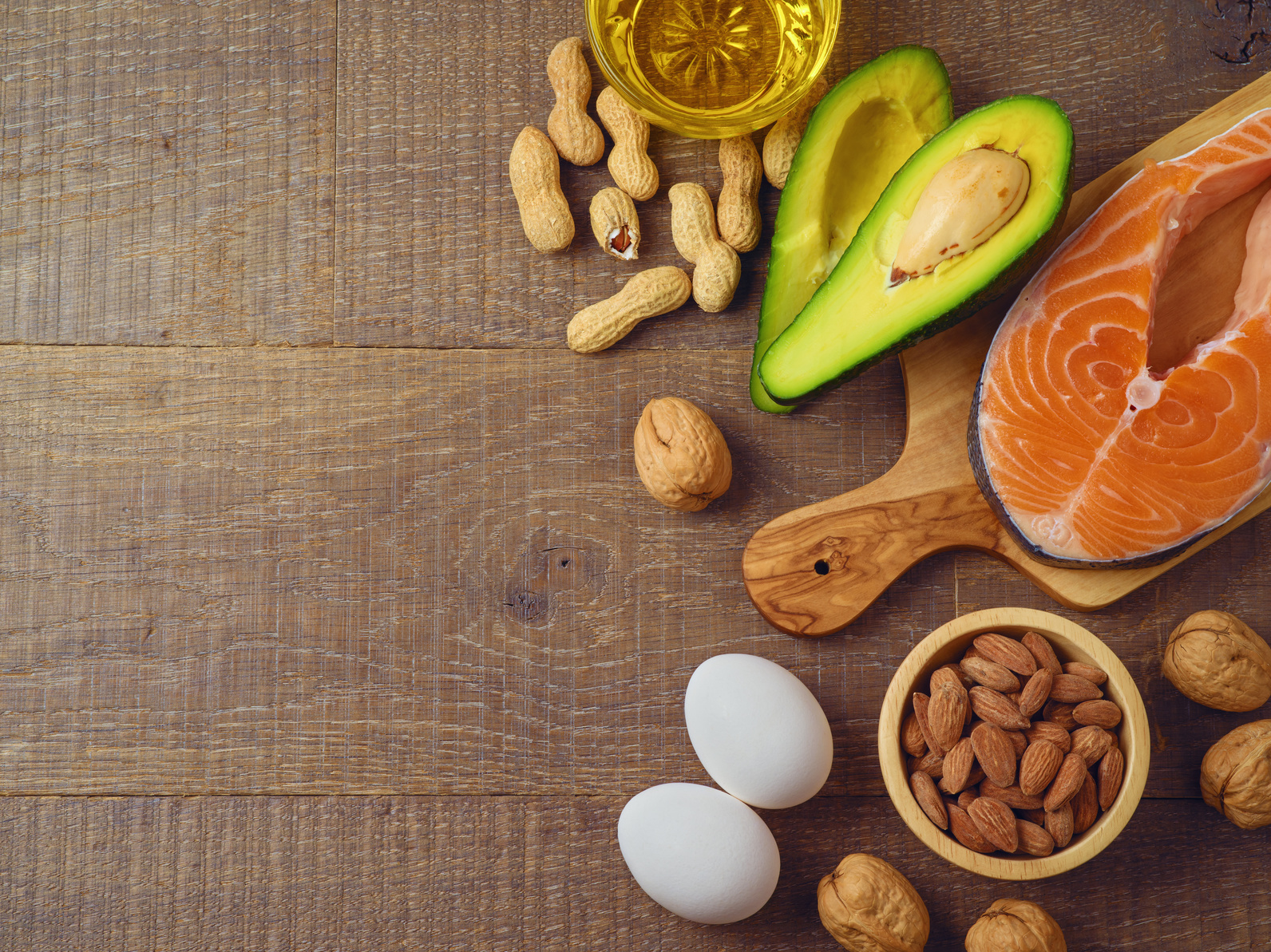Beating Calf Pain: How I Learned the Hard Way (And How You Can Avoid It)
My calves once felt like they were made of stone. Every step felt like I was dragging bricks.
If you’re dealing with calf pain after running, I’ve been in your shoes.
Back in my early running days, I used to brush it off.
Tight calves? Just part of the grind—or so I thought.
Then one early morning, just past sunrise, a cramp hit me so hard I had to sit on the curb. I remember rubbing a knot the size of a golf ball and thinking, “Am I done running for good?”
That moment forced me to wake up and start listening to what my body was screaming.
What I learned from that scare didn’t just help me get rid of the pain. It helped me run stronger, smarter, and with way more awareness of how my body works.
Calf Pain Is the Sneaky Villain Most Runners Ignore
Here’s the truth: calf pain is super common, but it doesn’t get talked about enough.
According to data from elitehp.com.au, around 80–85% of runners report calf soreness after a run. That’s nearly all of us.
Most runners obsess over their knees or ankles. But your calves?
They quietly take the hit on every single stride. Each time your foot hits the ground, your calf has to absorb the impact and help push you forward.
If your calves are tired, weak, or too tight to do their job? Something else—like your knees or Achilles—ends up picking up the slack. That’s how injuries sneak in.
I’ve seen this play out with tons of runners I’ve coached. One guy I trained, let’s call him John, couldn’t shake off knee pain.
We tried everything.
Turns out, his calves were the problem. Once we got those calves stronger and looser, the knee pain faded. His form improved too. Calves might not be flashy, but they’re workhorses—and when they’re off, the whole machine suffers.
Why So Many Runners Brush It Off
It’s easy to overlook calf pain. It doesn’t usually scream for attention.
It starts as a tight, post-run ache. You think, “No big deal.”
And because runners are tough (sometimes to a fault), we power through. But that dull ache can hide some real issues—strained muscles, overused Achilles, or worse.
Here’s a wild stat: 80–85% of runners regularly deal with sore calves.
And if that doesn’t convince you this is a big deal, a simple calf release video from pogophysio.com.au racked up over 150,000 views. That many clicks don’t lie—tight calves are a problem we all face.
The bottom line?
Calf pain is your body’s way of waving a red flag. Ignore it, and it’ll bite you later. Address it now, and you’ll not only feel better—you’ll run better.
Know Your Calves: The Muscles That Keep You Moving
Let’s break it down real simple.
Your calf isn’t one muscle—it’s a tag team: the gastrocnemius and the soleus.
- Gastrocnemius (aka “gastroc”): This is the bulging muscle you see when you stand on your toes. It crosses both your knee and ankle, and it’s built for power. Think sprints, jumps, and fast bursts.
- Soleus: This guy sits underneath the gastroc. It’s flatter, deeper, and doesn’t get much credit—but it’s a beast. The soleus helps you push through long runs and supports you when you’re standing for long periods. According to sports rehab research, it can produce massive force—and it’s often undertrained. A big mistake I see in rehab routines all the time.
Together, these muscles join at the Achilles tendon, that thick cable running from your calf down to your heel. Every time you toe off the ground, your calf-Achilles combo powers that move.
If your calves are strong and loose, your stride becomes springy and smooth. But if they’re tight or weak? That spring turns into a rusty hinge.
Takeaway tip: Don’t skip calf work. Both strength and flexibility matter.
Why Do My Calves Hurt? Common Causes of Calf Pain in Runners
Let’s talk about it—calf pain sucks. It can hit hard or creep in slow, and whether it’s a sharp zing mid-run or that post-run tightness that won’t quit, it messes with your flow.
I’ve had my fair share of runs cut short by angry calves, and most of the time, the cause is one of these usual suspects:
1. Doing Too Much, Too Soon (Overuse and Strains)
This is the big one. I see it all the time—runners ramping up mileage or attacking hills before they’ve built the base.
The calf, especially that big gastroc muscle, doesn’t love surprises. Push it too far too fast, and boom—you’ve got a strain.
Sometimes it feels like a sharp snap mid-run, or just soreness and stiffness creeping in later. Even without a full tear, micro-tears add up fast.
I once coached a new runner who thought daily 5Ks with zero rest was smart. Spoiler alert: it wasn’t. His calves begged for mercy within a week. Be smart. Your body needs time to adapt.
2. Cold Calves = Angry Calves (Inadequate Warm-Up)
Rolling out of bed and straight into a run? That’s a recipe for tight calves.
Muscles need blood flow and prep. Skip the warm-up, and you’re shocking your legs into motion. It’s like flooring a cold engine—things go wrong fast.
Those cramps in mile one? Often from going 0 to 100 with tight muscles. A 5-minute dynamic warm-up can save you weeks of pain.
3. Poor Running Form & Gait
How you move matters. If you run on your toes or strike too far forward (forefoot striking), your calves eat up all the impact.
Add in uphill climbs or overstriding, and you’re giving your lower legs a beating. Even small quirks like toeing out or favoring one side can mess with you over time.
I’ve worked with runners who fixed chronic calf pain by simply adjusting stride length or aiming for a midfoot strike. Sometimes the solution isn’t more stretching—it’s better mechanics.
4. Muscle Imbalances or Weakness
Here’s the kicker—tight calves aren’t always strong calves. Sometimes they’re weak and overworked.
Maybe the gastroc is doing all the lifting while your soleus is snoozing. Or maybe your shins and hammies are too lazy to carry their share.
That’s when the calves step in and get mad. I tell my athletes: don’t just stretch, strengthen. Build balance. It pays off.
5. Dehydration & Electrolyte Issues
If you’ve ever woken up to a calf cramp that felt like a lightning bolt, you know what I’m talking about. Lack of fluids and key minerals—like magnesium, sodium, potassium—can trigger those brutal spasms.
Training in heat makes it worse. One guy I coached was cramping constantly until we added a magnesium supplement. Magic.
Don’t underestimate the power of water and electrolytes—they’re your cramp insurance.
6. Footwear Fails & Foot Mechanics
Your shoes matter.
Worn out, unsupportive, or just wrong-for-you shoes can stir up calf pain fast.
Minimalist shoes can stretch your calves more—sometimes too much. Shoes with high heel drops might shorten the calves over time.
Rapid switches between the two? Bad idea.
Also, foot shape matters. Flat feet can lead to overpronation stress, high arches to poor shock absorption. A runner I know killed his calf pain just by adding arch support insoles. The right shoe setup changes everything.
7. Old Injuries or Hidden Causes
Not all calf pain is straightforward. Sometimes it’s nerve-related, like sciatic issues sending pain signals to your calves. Old Achilles injuries, nerve tension, even circulation problems can be the culprit.
I’ve seen runners deal with calf pain for months only to find out it was a hidden nerve entrapment. If your pain lingers, feels odd, or swells up, get it checked. Don’t guess.
Bottom line?
Calf pain usually isn’t from just one thing. It’s a mix—bad shoes, skipped warm-ups, heat, form flaws, and more.
The fix? Take an honest look at your training, your gear, and your habits. The causes are fixable if you pay attention.
And trust me—as someone who’s had to limp home more times than I’d like to admit, fixing it is worth it.
Next up, we’ll dive into how to treat calf pain and keep it from derailing your training.
Can I Keep Running with Sore Calves?
I get this question a lot from runners I coach—and honestly, I’ve asked it myself plenty of times:
“Is it okay to run with sore calves, or am I just setting myself up for injury?”
Well, it depends. And I’ll break it down for you the way I would with any runner after a tough week of training.
1. Mild Soreness? You’re Probably Good to Go (But Don’t Be Stupid)
If your calves feel tight after a hard run, new shoes, hills, or speedwork—and we’re talking low-level soreness here, maybe a 2 or 3 out of 10—you’re likely dealing with Delayed Onset Muscle Soreness (DOMS). It’s your calves saying, “Hey, we worked hard yesterday.”
This kind of soreness is normal. In fact, it often means you’re getting stronger. If movement helps it ease up, you’re okay to keep going—lightly. No all-out hill repeats the next day.
What I tell my runners: use the 24-hour rule. If the soreness eases up within a day and you’re not limping or changing your stride, then an easy run or some cross-training should be fine.
I’ve had plenty of runs where my calves were stiff at the start but loosened up as I got going. The key is to listen, not power blindly through. You’re not trying to prove toughness—you’re trying to stay consistent.
2. Sharp Pain or No Improvement? Time to Chill
Now, if that calf pain is sharp, locked-in, or just won’t go away—even with rest—stop running. I mean it.
Here’s where runners mess up: they feel something “off,” ignore it, and end up on the sidelines for six weeks instead of one.
I’ve seen it happen. Hell, I’ve done it.
Red flags you should never ignore:
- Pain that messes with your stride
- Swelling or bruising
- Pain that’s still there even when you’re just walking around
One runner told me he heard a pop mid-run, pushed through it like a hero, and then couldn’t walk the next day. That “pop”? Classic calf tear.
One of the physiotherapy clinic site calls this a serious strain, and yeah—they’re right. Keep running on that, and you’re looking at weeks (or months) out. If anything feels off, get it checked.
And let’s talk about chronic tightness—if your calves never feel loose, even after warming up or stretching for weeks, then something’s up. Could be a buildup of training mistakes, or something deeper like Achilles tendinopathy creeping in.
3. Not Sure? Rest Anyway. It’s Not Weakness—it’s Wisdom
If your calves are barking at you and you’re torn between pushing through or resting—just rest. One or two skipped runs won’t wreck your training. But ignoring warning signs? That’s how you spiral into injury.
I’ve told runners this a hundred times:
“You won’t lose all your progress by taking 48 hours off. You might lose everything if you don’t.”
Take a short break, stretch, foam roll, hydrate, and reassess.
I read a story on Reddit where a guy tried to “run through” a calf strain and ended up DNF’ing a race. After finally taking 10 days off and rehabbing properly, he came back and crushed a personal best.
That’s the power of patience. Your body heals—if you let it.
Real Talk: Ever Heard of the “Calf Heart Attack”?
Old-school runners sometimes joke about this thing called a “calf heart attack.”
It’s not a real heart attack, obviously—it’s that sudden tearing pain in the calf, often in the medial gastrocnemius, that hits during speedwork. Feels like someone shot your leg.
It’s brutal. It happens more in runners over 40. And trust me—you don’t run through it.
You stop. Right there. Ice it. Rest it. Start a slow recovery plan.
As study explains, as we age, our calf muscles lose elasticity. That’s why warming up properly, especially before speed workouts, becomes non-negotiable.
You’re not fragile—you just need to train smarter.
Quick Relief: How to Loosen Up Those Calves
Let’s say you’re dealing with tight calves right now—not a tear, just that annoying tightness that kills your stride. Here’s what I’ve found helps the most.
1. Walk Without Pain? Then Start Calf Raises
This is basic but golden: if you can walk without pain, try a few calf raises. Start slow. Test the waters. If there’s no pain, you’re probably in the clear to start easing back into activity.
2. Gentle Stretching (But Don’t Be a Hero)
Stretching can help—but it’s not about forcing things. You’re inviting the muscle to relax, not yanking it like it owes you money.
Try these:
- Wall Calf Stretch (Straight Leg): Press your heel into the ground with a straight back leg. You should feel this in the top of your calf (gastroc). Hold for 30 seconds.
- Soleus Stretch (Bent Knee): Same position, but bend your back knee slightly to hit the deeper soleus muscle. Again, hold it—don’t bounce.
- Downward Dog Pose: Classic yoga move. Push hips up and back, heels reaching for the ground. It’s a great all-over stretch for the lower legs.
All of these come from years of trial and error—and yep, they’re backed by sources like runnersblueprint.com and pogophysio.com.au.
But remember: if you’re freshly injured, don’t stretch aggressively right away. Early on, stick with ankle circles, light massage, and walking around to keep blood flowing.
Some of my runners do calf stretches every night before bed. It helps with morning stiffness, especially if you’re ramping up mileage. But don’t expect miracles if stretching is your only recovery tool—it’s part of the plan, not the whole thing.
Can You Run with Sore Calves? Here’s the Real Talk
I’ve lost count of how many runners ask me this:
“Coach, my calves are sore. Should I still run or am I asking for trouble?”
Here’s the short answer: it depends. But let’s break it down properly—because not all soreness is the same.
1. Normal Post-Run Soreness? You’re Probably Good to Go (With Caution)
If it’s that dull, tight feeling a day or two after a tough session—especially if you did hills or pushed the pace—chances are it’s just DOMS (Delayed Onset Muscle Soreness). That’s your muscles saying, “Hey, we worked!”
We’re talking mild stiffness. Maybe a 2 or 3 out of 10 on the pain scale. Nothing sharp. No limping. Just that “earned it” kind of sore.
In this case, I usually tell runners to go for an easy jog, do some light cross-training, stretch, hydrate, and move. You’re not broken. You’re adapting.
I like the “24-hour rule”:
If it feels better a day after the run and nothing is sharp or weird, you’re probably good to go. Just don’t hammer it again too soon.
Real-life example?
Back when I added speedwork after a long break, my calves screamed for two days. But with some slow jogs and proper warm-ups, they calmed down—and got stronger for it.
2. Sharp, Stabbing, or Not Going Away? Time to Hit Pause
Now let’s talk about the stuff you shouldn’t ignore.
If the pain is sharp, it sticks around for more than two days, or it messes with your stride—don’t push through it. Seriously. I’ve seen runners take a one-week strain and turn it into a six-week nightmare because they “didn’t want to lose fitness.”
Red flags include:
- A sudden “pop” during a run (that could be a tear).
- Bruising or swelling in the calf.
- Pain even when you’re just walking or sitting still.
- Limping or shifting your gait to compensate.
If that’s what you’re feeling, stop. Ice it. Rest. And get it checked out if it doesn’t improve.
One study noted that older runners—especially those doing speedwork—are more likely to suffer serious calf injuries, often in the medial gastrocnemius (that’s the inside part of the calf that tends to “grab” suddenly).
3. Not Sure? Take a Day (Or Two)
This one’s simple.
If your calves are barking and you’re not sure if it’s just soreness or something worse—take a day off. Or two. Rehab with some light movement, foam rolling, maybe swimming or cycling. See how it responds.
You won’t lose fitness in 48 hours. But you could lose six weeks if you ignore the early warning signs.
One Reddit runner shared that he tried to “tough it out” through a calf strain and ended up DNF’ing a race. But after finally giving himself a proper 10-day break, he came back and PR’d a few months later.
Lesson: the body knows. Let it recover, and it’ll reward you.
Bonus Tip: Ever Heard of a “Calf Heart Attack”?
Yep, it’s a thing—kind of. That sudden, grabbing pain in the middle of a workout that feels like you just got sniped. It’s not a heart attack, obviously—but older runners (especially over 40) know this one well.
It’s usually a tear in the medial gastroc, and it hits hard. Happens most often during speedwork without a solid warm-up.
If this happens, stop immediately. Ice it. Rest. You’ll need a recovery plan—don’t even think about “running it off.”
As we age, our calf muscles lose elasticity. That’s why proper warm-ups and slow progressions become non-negotiable. Take it seriously, or risk a big setback.
Got Tight Calves Right Now? Here’s What Actually Helps
Let’s get to the good stuff—what to do when your calves are tight but not torn.
1. Can You Walk Without Pain?
Before you run, check if you can:
- Walk pain-free
- Do a few calf raises with no discomfort
If you can’t do those? You’re not ready to run. Back up and heal first.
2. Gentle Stretching (But Don’t Yank on It)
Stretching can help—but only when it’s done smart.
Here are my go-tos:
- Straight-leg Calf Stretch (Gastroc): Hands on the wall, one foot back, heel pressed down, leg straight. Feel that stretch high up in the calf? Hold it for about 30 seconds. No bouncing.
- Bent-Knee Calf Stretch (Soleus): Same setup, but this time bend the back knee slightly. This gets deeper into the soleus. Again, hold for 30–45 seconds.
- Downward Dog Pose: Push your hips up, heels toward the ground, hands planted. You’ll feel it from your calves to your hamstrings. You can pedal your heels too—works each side individually.
Just a reminder: stretching shouldn’t be torture. You’re coaxing the muscle to relax, not punishing it.
A bit of tension is fine. Sharp pain? Back off.
Also—don’t stretch aggressively in the first 24–48 hours after a strain. Stick to light massage, ankle circles, and gentle mobility work first.
3. Make Stretching a Daily Habit
I tell my athletes to stretch calves every day, especially after a run while the muscles are still warm.
Before bed is a great time too—helps cut down that brutal morning stiffness.
One runner on Reddit said, “I stretch constantly and they’re still tight!”
And I get it. That’s because stretching is only part of the fix. The other key? Strength work. (We’ll get to that in the next section.)
4. Self-Massage and Foam Rolling (Calf Release Techniques)
You ever hit a tight spot in your calf with a foam roller and feel that “hurts-so-good” kind of pain? That’s your muscle saying, “Finally, some help.”
Self-massage is one of the simplest, most effective ways to loosen up tight calves and get the blood moving again.
Here’s what’s worked for me and the runners I coach:
● Foam Rolling
Grab a firm foam roller, drop to the floor, and get to work. Sit with one calf on the roller and support yourself with your hands behind you.
Roll slowly from your ankle to just below the knee.
Find a knot? Pause there. Breathe into it for 20–30 seconds and let the muscle release.
If you want more pressure, stack your other leg on top. Yeah, it’ll feel uncomfortable—but in a good way. That deep pressure can help flush things out.
One technique that’s gotten a lot of love is the “foam roller sit”—basically sitting on a long roller with it under your calves and rocking side to side. I saw it on PogoPhysio, and it’s been a game changer when my calves are cranky. No fancy moves—just gravity doing the work.
● Massage Stick (“The Stick”)
Looks like a rolling pin, and honestly, a kitchen rolling pin can do the trick in a pinch (I’ve done it). Just grab the handles and roll it up and down your calf like you’re kneading out pizza dough.
Reddit is full of runners who swear by this. One even said, “I love the pain of rolling out my calves”—and yeah, I kinda get it. That sweet relief after a stick session is worth every wince.
If you’ve been getting deep knots post-run, this one’s easier to control than a foam roller. And it takes about two minutes to get those calves feeling human again.
● Lacrosse or Massage Ball
For those spots that foam rollers can’t touch—usually around the outer calf or near the Achilles—a firm ball is your best friend.
Sit down, place it under your calf, and apply pressure. You can move in circles or just sit on that spot until the tension fades.
Just be careful near your Achilles—don’t go too hard there. Focus on the meaty upper part of your calf.
● Manual Massage
Got a massage therapist? Great.
If not, your own thumbs will do. Use your knuckles or thumbs to work up and down the calf, always pushing toward the heart.
I’ll do this at night while watching Netflix—thumbs digging into the tight spots while I zone out. A little lotion or oil helps smooth things out too.
You don’t need an hour. Just a few minutes a day keeps tightness from piling up. I keep a foam roller in my living room and a massage ball in my backpack. Recovery on the go.
Bonus tip: Heat helps before a massage or rolling session. A hot shower or a heating pad for 10 minutes gets the muscle loosened up—kind of like warming up clay before you shape it.
5. Compression & Elevation (Recovery Boosters)
Compression socks aren’t just for show. When I’m wearing them during long runs or hard workouts, my calves thank me later. Less soreness. Less wobble. More support.
While research is mixed on performance benefits, plenty of us runners—myself included—feel better after wearing them. Especially on days when I’ve got errands or work right after a long run.
Post-run, they help by improving blood flow and clearing out the junk that builds up after tough workouts. No fancy gear needed—just slide on the sleeves and let them do their thing.
Got tired legs? Elevate ‘em. Throw your feet up on a wall or pillow for 15–20 minutes post-run. I like to do the “legs up the wall” yoga pose—easy, calming, and it helps reset your calves. It’s a zero-effort win.
6. Topical Stuff: Balms, Rubs, and Gels
Magnesium spray. Arnica gel. Menthol rubs. I’ve tried them all. Do they fix the root cause? No. But they do offer short-term relief.
That warm, tingly feeling can distract from the soreness, and sometimes just massaging the stuff in is half the therapy. But a word of warning: don’t use heat rubs under compression sleeves unless you enjoy the feeling of lava on your legs. Trust me.
7. Active Recovery: Keep the Blood Flowing
This one’s big. Rest has its place, but movement heals.
If my calves are cooked the day after a big run, I don’t just crash on the couch. I go for a bike ride, take a brisk walk, or hit the pool. Nothing crazy—just enough to get the blood moving. That circulation helps clear out soreness and repair the muscle.
It’s not about being a hero. It’s about being smart. Gentle movement beats total rest for tightness 9 times out of 10.
Calf Pain Can Be the Fuel for Your Comeback
Here’s what I tell my runners: setbacks build grit. Calf pain isn’t just a nuisance—it’s your shot to level up. I’ve coached athletes who went from limping through easy runs to smashing PRs, simply because they stuck with the rehab process and kept showing up.
That can be you.
So if your calves have been a weak link, this is your moment to flip the script. Let those frustrating miles fuel your next breakthrough.
Every little step counts. That stretch today? That extra water bottle? That strength set you almost skipped? They all lead to one thing: crossing the line strong and pain-free.
Your Quick-Action Checklist: Beat Calf Pain for Good
- Warm up like you mean it. Don’t skip the basics.
- Strengthen with focused calf moves—raise, hold, repeat.
- Stretch and roll after hard runs. Make it part of your cool-down.
- Hydrate and fuel right. Your calves are muscles—they need it.
- Rest when needed. One day off beats six weeks on the sideline.
- Don’t ignore early signs. Catch it while it’s small.
- Ask for help if it lingers. A good PT can save your season.
Now it’s on you. Lace up with purpose, take these tips seriously, and get to work. Stronger, pain-free runs are waiting. And trust me—there’s nothing better than feeling your legs fire without fear.
Go out there and own it.
Keep running strong,
David D.







